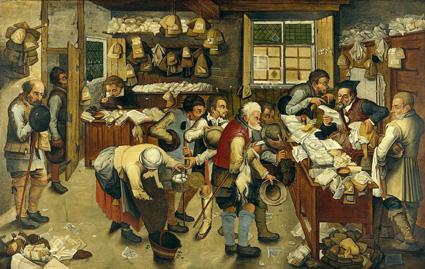The procedure
In a letter dated 4 April 2007, J.M.P. of A. (USA) and J.H.-M. of A. (USA) (hereafter referred to as ‘the applicants’) submitted an application to the Minister for the restitution of five paintings said to have been part of the collection of a member of their family, Wilhelm Mautner (hereafter referred to as: ‘Mautner’). The applicants were represented in this procedure by the lawyer Henning Kahmann of Von Trott zu Solz Lammek of Berlin.
In the context of the request submitted to it for recommendation, the Committee instigated a fact-finding investigation, the results of which were included in a draft investigatory report dated 9 February 2009. The draft investigatory report was sent to the applicants for comment and to the minister with a request for additional information on 9 February 2009. On 9 March 2009, the Minister said that he would not be using this opportunity. After the Committee granted the applicants’ request for additional response time, the applicants sent a response by letter on 25 May 2009, in which, with regard to NK 1783, the applicants also requested more time. This request was granted by the Committee. However, in a letter dated 30 June 2009, the applicants said that they were unable to provide more information.
The Committee also conducted additional research into the role played by Hans Alfred Wetzlar (hereafter referred to as: ‘Wetzlar’), who, at the time, probably acted as agent in transactions with Mautner. The Committee asked Wetzlar’s family about this in May 2009, but they were unable to provide any information. The applicants’ responses and the Committee’s additional research were included in the investigatory report, which was subsequently adopted on 12 October 2009. For the facts of the case, the Committee refers to this report.
It emerged during the procedure that NK 2655 is also part of an application for restitution concerning the art dealership D. Katz of Dieren, known from 1941 onwards as ‘Schilderijen en Antiquiteitenhandel v/h D. Katz N.V.’ , referred to here jointly as ‘kunsthandel Katz’ [art dealership Katz] (RC 1.90-B). In a letter dated 13 July 2009, the Committee informed the applicants that it would postpone its recommendation until the investigation of NK 2655 in the RC 1.90-B case had also been concluded. During the consultations regarding RC 1.89, the Committee decided to split the case into two recommendations to accelerate progress. This means that NK 1655, NK 1783, NK 2216 and NK 2297 are included in the current recommendation RC 1.89-A while the recommendation regarding NK 2655 will be postponed.
